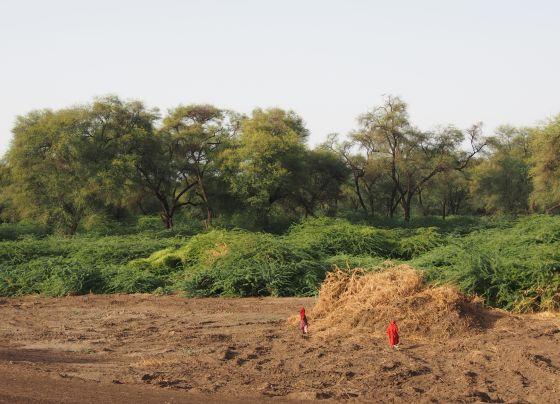Woody invasive alien species in East Africa: assessing and mitigating their negative impact on ecosystem services and rural livelihood

The project aims to help mitigate the negative effects of woody invasive alien species on biodiversity, ecosystem services and human well-being in East Africa.
About the project
Background
Trees and shrubs were repeatedly introduced in areas beyond their native range as they can provide goods and services to the rural poor. Over the years, several of these woody species have escaped cultivation and become some of most important invasive alien species worldwide, particularly in Africa. In South Africa, the costs inflicted by woody invasive alien species on ecosystem services were estimated at USD 1 billion per year, and could rise to >5% of GDP if invasive plants are allowed to reach their full potential. Upper income and upper-middle income countries have implemented multi-million-dollar programs to develop technologies and policies aiming to mitigate the negative impacts of woody invasive alien species. In contrast, there is a serious lack of coordinated and sustainable management of woody invasive alien species in low-income countries, including the heavily affected countries in East Africa.
Objectives
The aim of the project is to help mitigate the effects of woody invasive alien species on biodiversity, ecosystem services and human well-being in East Africa. To achieve this goal, we will generate and share knowledge on invasion processes and on context-dependent effects of woody invasive alien species in Tanzania, Kenya and Ethiopia, elaborate sustainable control measures and develop and document Sustainable Land Management strategies that mitigate the negative effects of woody invasive alien species in East Africa.
Relevance
Invasive alien species are key drivers of anthropogenic global environmental change as they threaten native biodiversity and ecosystems services. However, there is only limited understanding of the mechanisms that link invasive alien species and human well-being, and their context-dependency. Both economic and non-economic valuation information is increasingly needed, as the ecosystem services approach to conservation and human well-being is becoming an important instrument in environmental policy and decision making. To inform policy-makers, we will upscale studies on woody invasive alien species impacts and stakeholder responses at local scale by modelling invasion impacts at larger (subnational and national) scale. These research findings will inform the development of practical mitigation strategies at all scales and, underpinned by active engagement with policy-makers, lead to the development of a policy environment that is conducive for widespread application of Sustainable Land Management approaches to mitigation of the negative impacts of invasive alien species.
Highlights and selected results
A fractional cover map of the Afar region in Ethiopia revealed that Prosopis spp., the main woody IAS in the region, has invaded within 35 years more than 1.3 million ha of grass- and shrubland. First results on the environmental impacts of woody IAS indicate that, not surpris-ingly, invasion increases availability of woody biomass, but that it reduces plant diversity in a density-dependent way, with cascading effects on a number of ecosystem patterns and ser-vices, including fodder production for livestock and abundance of natural enemies and polli-nators. The evergreen Prosopis trees consume 10-20 L water/day throughout the year, which leads to huge water losses in invaded ecosystems. In the two case study areas analyzed so far, socio-economic studies showed that the local communities are concerned about the negative impacts of woody IAS on biodiversity and water household, and that these two factors are the main reason why the negative impacts are considered to outweigh the positive effects of these deliberately introduced trees and shrubs.
From the beginning of the project, we have been engaging with stakeholders in the three countries through local stakeholder workshops with participatory exercises, regular visits of and discussions with national and subnational stakeholders and with the involvement of local stakeholders in data collection. We have now started summarizing the key findings of the first project years to use the information in a joint process with stakeholder groups to identify and prioritize management options through a structured multi-criteria decision process and to test implementation. Also, field trials have been set up to test various woody IAS control and ecosystem restoration measures in the different case study areas.Geographic scope
- Eth iopia
- Kenya
- South Africa
- Tanza nia
Project website and links to P3
- Link to project website
- Links to project phase
) and project phase
) on SNSF research database P3
